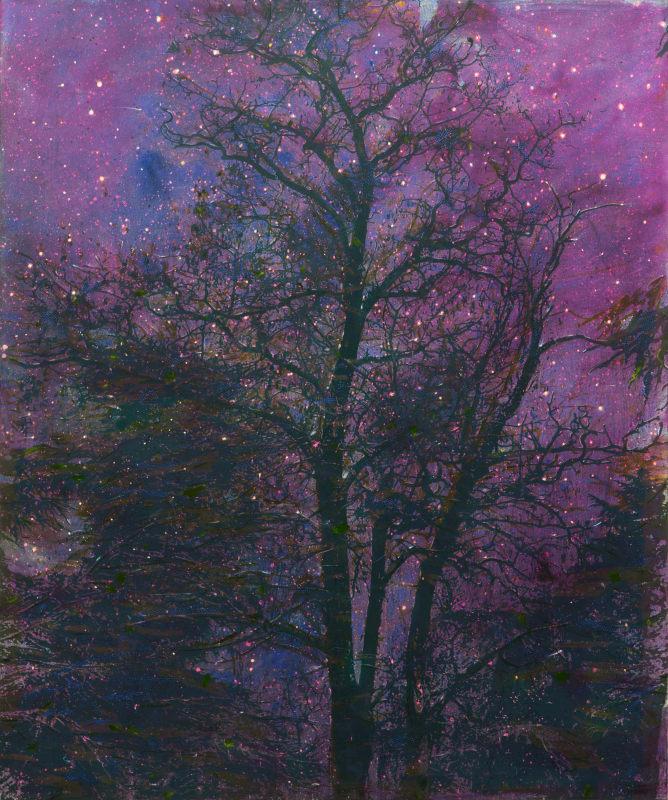Elizabeth Magill’s paintings are enigmatic and evocative psychological takes on the traditional landscape genre. Rich with fragmented forms and kaleidoscopic patterning her images are formed from the artist’s imagination, memories, photographs, to become something other. Although depicting realistic rural or coastal settings, the term ‘inscape’ has been used to describe Magill’s works - landscapes not conceived by direct observation but imbued with a sense of self and reflection. Though they have a cinematic beauty, her paintings are eerie and foreboding: trees or telephone wires conceal the view, birds flock in the night sky, distant silhouetted human figures, hills, lakes and over everything there is often a lurid, polluted light which broods over impending environmental disaster and an apocalyptic threat of instability. Her images stem - as much as does her imagination - from the County Antrim coast of her childhood and the unhappy coexistence of a landscape of legendary beauty with a social history skewed by political conflict and toxicity.
Magill’s complex and densely layered paintings employ a multitude of techniques including stencilling, screen-printing and collage as well as the pouring, blending, dripping and scraping away of paint. Film and photography are also central to her work, infusing her approach to light, tone, and atmosphere.
Elizabeth Magill was born in Canada in 1959 and studied fine art in Belfast College of Art, Ireland 1979-82, and the Slade School of Art in London 1982-84. Magill's work is represented in many museum and public collections worldwide including TATE, London; The Irish Museum of Modern Art; The Hugh Lane Gallery, Dublin; The Arts Council of England; The Arts Council of Northern & Southern Ireland; Ulster Museum, Belfast; The British Museum, London; Towner Art Gallery & Museum, Eastbourne; Worcester Museum and Art Gallery; Southampton City Art Gallery; Walsall Art Gallery & Museum; The Government Art Collection; The British Council and the National Gallery of Australia.
Magill lives and works in London and Ireland.
